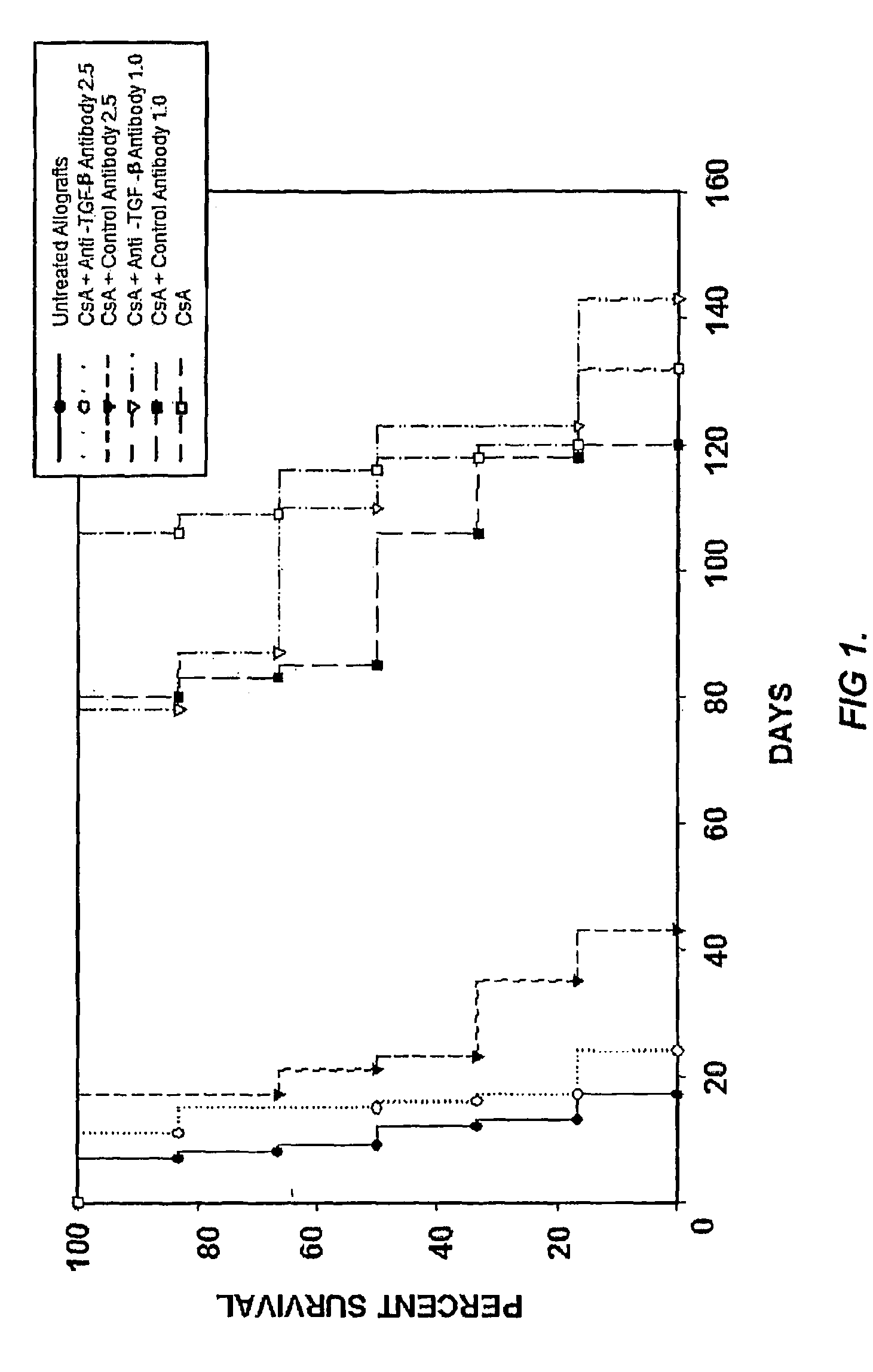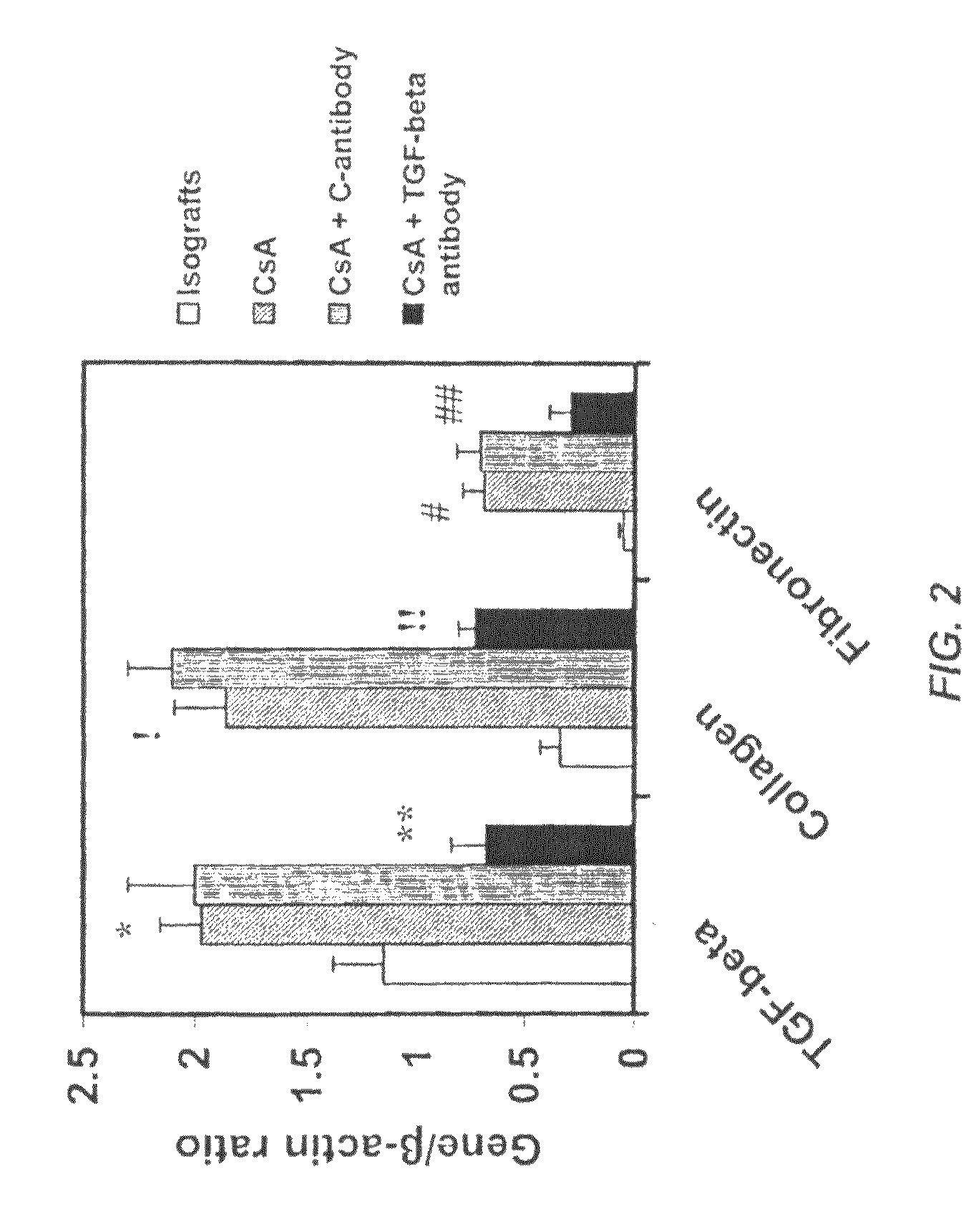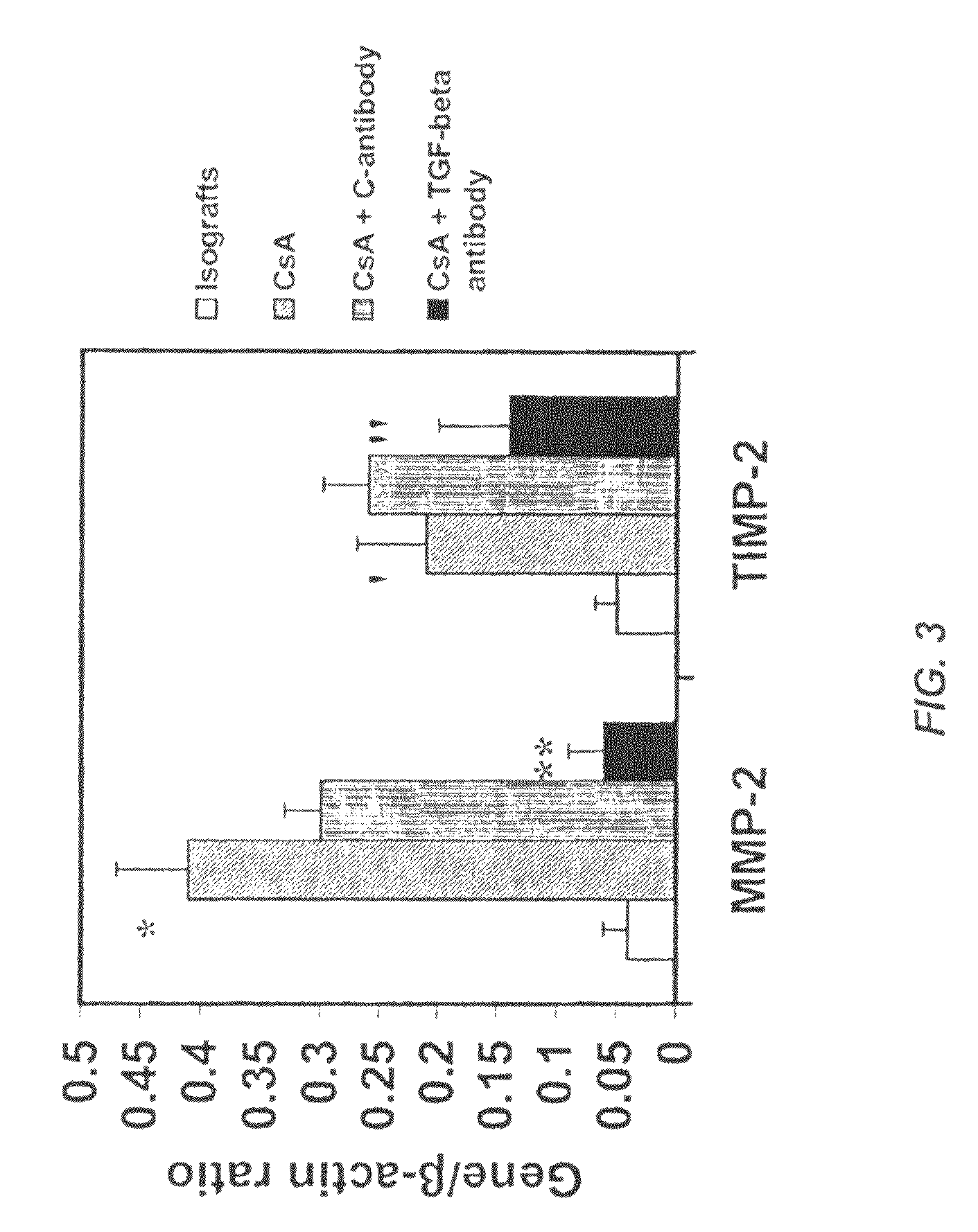Use of TGF-β antagonists to limit nephrotoxicity of immunosuppressive agents
a technology of immunosuppressive agents and antagonists, which is applied in the field of organ transplantation (transplantology), clinical immunology, and nephrology, can solve the problems of nephrotoxicity, a serious complication of immunosuppressive agents, and a progressive state of renal dysfunction, so as to alleviate the nephrotoxic side effects and alleviate the nephrotoxic effects of immunosuppressive agents
- Summary
- Abstract
- Description
- Claims
- Application Information
AI Technical Summary
Benefits of technology
Problems solved by technology
Method used
Image
Examples
example 1
Effect of Anti-TGF-β Antibody on Immunosuppressive Effects of CsA
[0106]The rat heterotopic heart transplant model employing the completely mismatched strain combination WF (RT1u) into LEW (RT11), which was used in these studies, requires chronic immunosuppression to prevent rejection. TGF-β neutralizing antibody or an isotype matched control antibody were administered to determine whether TGF-β expression affects allograft survival in CsA-treated animals within the first 30 days.
[0107]Grafts from untreated animals rejected on average 11 days post-transplantation (n=6, 11±1.5). In contrast, grafts from CsA-treated animals survived for an average of 117 days (n=6, 117±9, p<0.001). To better understand the role of TGF-β in the pathogenesis of chronic rejection, heart transplant recipients were dosed with 1.0 or 2.5 mg / kg of anti-TGF-β antibody three times weekly beginning at three days post-transplantation. Control antibody was administered at identical concentration and dosing schedul...
example 2
Effect of Anti-TGF-β Antibody on Nephrotoxic Effects of CsA
[0109]These experiments were performed to study the role of TGF-β in nephrotoxic effects of CsA. Along with CsA, recipients were also treated with TGF-β or control antibody (1.0 mg / kg) three times a week until the time of rejection. Groups included: untreated allografts; CsA treated allografts; CsA+Control antibody (1.0 mg / kg) treated allografts and CsA+anti-TGF-β antibody (1.0 mg / Kg), treated and isotype controls.
[0110]Renal function was measured by quantifying creatinine and blood urea nitrogen (BUN) levels in plasma of rats obtained after sacrifice from all experimental animals studied. Quantification was performed using kits from Sigma (St. Louis, USA). BUN levels were elevated in the CsA treated animals versus isograft controls (18.6±0.85 vs. 12.6±0.4 mg / dl; p<0.0001) and decreased levels were observed in CsA+anti-TGF-β antibody treated animals (13.8±0.63, p<0.03) but not with CsA+control treated animals (...
example 3
Anti-TGF-β Antibody Reduces the Effects of TAC on Kidney Function
[0137]BUN levels (FIG. 5A) were elevated in TAC-treated rats after 90 days of treatment versus isograft controls harvested at 90 days post transplantation (29.9±1.3 vs. 17.3±1.3 mg / dl; p<0.0001). Anti-TGF-β antibody (21.3±0.9, p<0.01) but not control antibody (26.6±1.1 mg / dl) decreased BUN levels. Similarly, a significant increase in serum creatinine (0.83±0.06 vs. 0.52±0.09 mg / dl; p<0.04) was observed in TAC-treated recipients compared to time-matched isograft transplant controls. Similarly to BUN levels, anti-TGF-β antibody (0.48±0.08 mg / dl; p<0.02) but not control antibody (0.78±0.09) inhibited TAC-induced creatinine levels (FIG. 5B).
PUM
| Property | Measurement | Unit |
|---|---|---|
| concentration | aaaaa | aaaaa |
| length | aaaaa | aaaaa |
| mean survival time | aaaaa | aaaaa |
Abstract
Description
Claims
Application Information
 Login to View More
Login to View More - R&D
- Intellectual Property
- Life Sciences
- Materials
- Tech Scout
- Unparalleled Data Quality
- Higher Quality Content
- 60% Fewer Hallucinations
Browse by: Latest US Patents, China's latest patents, Technical Efficacy Thesaurus, Application Domain, Technology Topic, Popular Technical Reports.
© 2025 PatSnap. All rights reserved.Legal|Privacy policy|Modern Slavery Act Transparency Statement|Sitemap|About US| Contact US: help@patsnap.com



